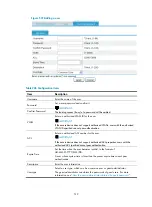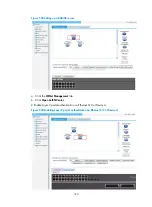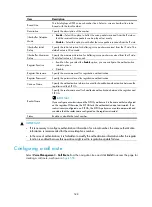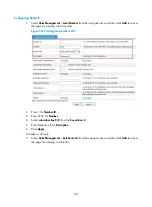
525
Local number and call route
This chapter describes local numbers, call routes, fax and modem, call services, and advanced settings.
Local numbers and call routes
Local numbers and call routes are basic settings for making voice calls.
•
Local number configuration includes setting a local telephone number and authentication
information used for registration.
•
Call route configuration includes setting a destination telephone number and call route type. You
can select either SIP routing or trunk routing as the call route type. SIP routing includes proxy server
mode, IP routing mode, and binding server group mode.
For more information about basic settings of local number and call route, see
Fax and modem
After completing the VoIP configurations (that is, the basic settings of local number and call route), you
can make IP calls. Generally, if you connect the device to a fax machine or a modem, you can send and
receive faxes with the default settings. In the fax and modem configuration page, you can adjust some
parameters according to your needs.
For more information about fax and modem configuration, see
Call services
Call services contains various new functions on the basis of voice basic call to meet the application
requirements of VoIP users.
For more information about call services configuration, see
.
Some call services require the involvement of a voice server. For information about how to configure the
voice server, see "Configuring SIP connections."
Advanced settings
The advanced settings include the following parts:
•
Coding parameters
—This part includes the configuration of codec priorities and packet assembly
intervals. The voice codec affects the voice bandwidth and voice quality. You must select a proper
codec according to the actual network. The packet assembly interval depends on the network
bandwidth and network architecture, and affects codec delay time.
•
Others
—This part includes the configuration of number selection priority, dial prefix, called number
sending mode, DTMF transmission mode, DSCP field value, and so on.
Summary of Contents for MSR SERIES
Page 17: ...xv Documents 835 Websites 835 Conventions 836 Index 838 ...
Page 20: ...3 Figure 3 Initial page of the Web interface ...
Page 42: ...25 Figure 13 Firefox Web browser setting ...
Page 59: ...42 Figure 27 Checking the basic service configuration ...
Page 73: ...56 Figure 35 Sample interface statistics ...
Page 156: ...139 Figure 139 Rebooting the 3G modem ...
Page 168: ...151 Figure 152 Configuring Web server 2 ...
Page 174: ...157 Figure 158 Configure the URL filtering function ...
Page 242: ...225 Figure 233 Enabling the DHCP client on interface Ethernet 0 1 ...
Page 247: ...230 Figure 236 The page for configuring an advanced IPv4 ACL ...
Page 255: ...238 Figure 241 Advanced limit setting ...
Page 298: ...281 e Click Apply 2 Configure Router B in the same way Router A is configured ...
Page 400: ...383 Figure 387 Verifying the configuration ...
Page 405: ...388 ...
Page 523: ...506 Figure 530 Ping configuration page ...
Page 775: ...758 Figure 785 Configuring a jump node ...






























